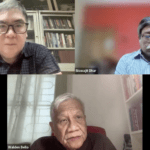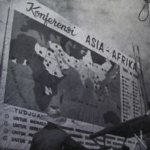By Devinder Sharma*
IN mid 1980, the sale of Banita, a young girl from Kalahandi in Orissa, shocked the nation. Two decades later, the nation did not notice the cries of a one-month old baby who was sold by her mother for a mere Rs 10 (approximately 21 cents). For Sumitra Behera, 35, a resident of Badibahal village in Angul district of Orissa, selling her one-month old daughter was perhaps the only way to feed her other daughters, Urbashi, 10, and Banbasi, 2. In the month of December 2003, three other families grappling with hunger in Angul, Puri and Keonjhar in Orissa had reportedly sold their children.
Two decades earlier, the nation was outraged when a major newspaper bought a woman for Rs 2000 (approx US$42). The intrepid reporter, who risked his life to investigate the shoddy and inhuman trade, wrote in his column that even a pair of shoes would cost more. It no longer requires the investigating skills of Ashwini Sarin to lift the veil from the hidden face of "India Shining" – the government’s feel-good slogan for up and coming India. You can now buy a child for less than the price of a bottle of mineral water.
As abject poverty remains buried behind the fa?ade of India Shining, there is excitement in the air. The German luxury carmaker, DaimlerChrysler, has announced the launch of the most luxurious car in the world, in India. At Rs 500,000 a piece (about US$100,000) the upwardly mobile have already begun to queue up. Selling dreams is no longer the prerogative of Bollywood.
Despite the Planning Commission lowering the percentage of poor and poverty stricken in its unread documents, the magic trick of playing with numbers hasn’t made any difference to the growing disparities. Amidst recurring political elections, and the brazen marketing hype to sell images of growth and development, the shameful paradox of hunger at times of plenty has been quietly buried under heaps of grain that continue to rot in the open. That 7,500,000 people, more than the population of Switzerland, had applied for a mere 38,000 lowly-paid jobs in the Indian Railways, is no longer a matter of concern at times when the country is on a fast track information highway. Not to discount the achievements in information technology, the fact remains that IT has provided only 500,000 jobs.
Meanwhile, hunger continues to grow in India, which alone has one-third of the world’s estimated 860 million people who go to bed hungry. In fact, hunger and poverty have proved to be robustly sustainable. Directly related to growing unemployment, reports of gnawing hunger and starvation deaths in Rajasthan, Madhya Pradesh and Orissa hit the national headlines time and again. In 2002, reports of hunger and starvation deaths have also regularly poured in from the country’s progressive and economically fast-growing cyberstates – Andhra Pradesh and Karnataka.
At the same time, India continues to make room for exporting surplus foodgrains. In 2000, an estimated 320 million people desperately need food despite more than 60 million tonnes in grain stocks. In 2002, 17 million tonnes of the surplus food meant for the hungry, was exported at below poverty line prices. No political leader even thought of bringing the shameful paradox to the attention of Parliament.
While people die of hunger, the government sits atop a mountain of food grains. In 2001, starvation deaths were reported in over 13 states while the storage facilities of the Food Corporation of India (FCI) were full of grains, some of it rotting and rat-infested. There was a proposal to dump it in the sea, to make storage space for the next crop, when export markets could not be found for this surplus. Such was the quantity of food kept in the open, that if each bag was stacked one upon the other, there was no need to launch a scientific expedition to put a man on the moon. You could simply walk to the moon and come back.
The same year, a case was filed by some NGOs in the Supreme Court in India asking for directions to ensure the fundamental right to food of every citizen. The Supreme Court Bench, comprising Justice B.N.Kripal and Justice K.G. Balakrishnan, directed the government to "devise a scheme where no person goes hungry when the granaries are full and lots being wasted due to non-availability of storage space." To the Attorney General’s plea that devising such a scheme would require at least two weeks, the Court even allowed for enough time. The Court also sought affidavits from the State governments of Orissa, Rajasthan, Chattisgarh, Maharashtra, Gujarat and Himachal Pradesh detailing their response to meet the unprecedented situation of "scarcity among plenty". This was in 2001. Two years later, Sumitra Behera had to sell her one-month-old child to feed her other two children. A recent survey conducted in Madhya Pradesh, in central India, found 6,785 children in 43 blocks of Shivpuri district severely malnourished — an average of 160 per block. The situation is equally hopeless in other states. Malnutrition continues to multiply, more so among children and women. The extent of malnutrition that exists in the country remains hidden. It doesn’t make shocking news. Hunger makes news only when someone dies.
The ground realities are far removed from the rhetoric and the statistics that have bred immunity against compassion. We are all part of a global system, which perpetuates poverty and deprivation. We make tall claims of feeling good by pushing stark realities of growing poverty and hunger from the public glare. We are, therefore, in reality, the cause behind hunger. Behaving like an Ostrich is surely not going to eclipse hunger from the politico-economic radar screens. It requires determination and will.
Zero Hunger: First and foremost, it requires the political leadership to accept the extent of crisis, to accept that hunger exists in the country, and to then launch a time bound programme towards eradicating hunger. If Brazil can launch a programme for ‘zero hunger’, there is no reason why India cannot demonstrate political maturity to combat the national shame.
Task Force: If a ministry can be set up for disinvestments, another for information technology, and still another for food processing, there is no reason why a high ranking task force cannot be constituted with the clear cut mandate of removing hunger. The task force should be directly under the supervision of the Prime Minister.
Public Policy: The task force should oversee the economic policies to ensure that there is no contradiction in government’s resolve. Zero hunger should not be construed as a mass mid-day meal programme but be directed towards building sustainable livelihoods that helps build the capacity of the poor to emerge out of poverty and hunger.
Hunger is not a curse that some among us have to live with. Hunger is a reflection of our misplaced emphasis towards growth for a few. The hungry do not need our sympathies. They need a helping hand, and they can do the rest.
* Devinder Sharma is a New Delhi-based food policy analyst.






